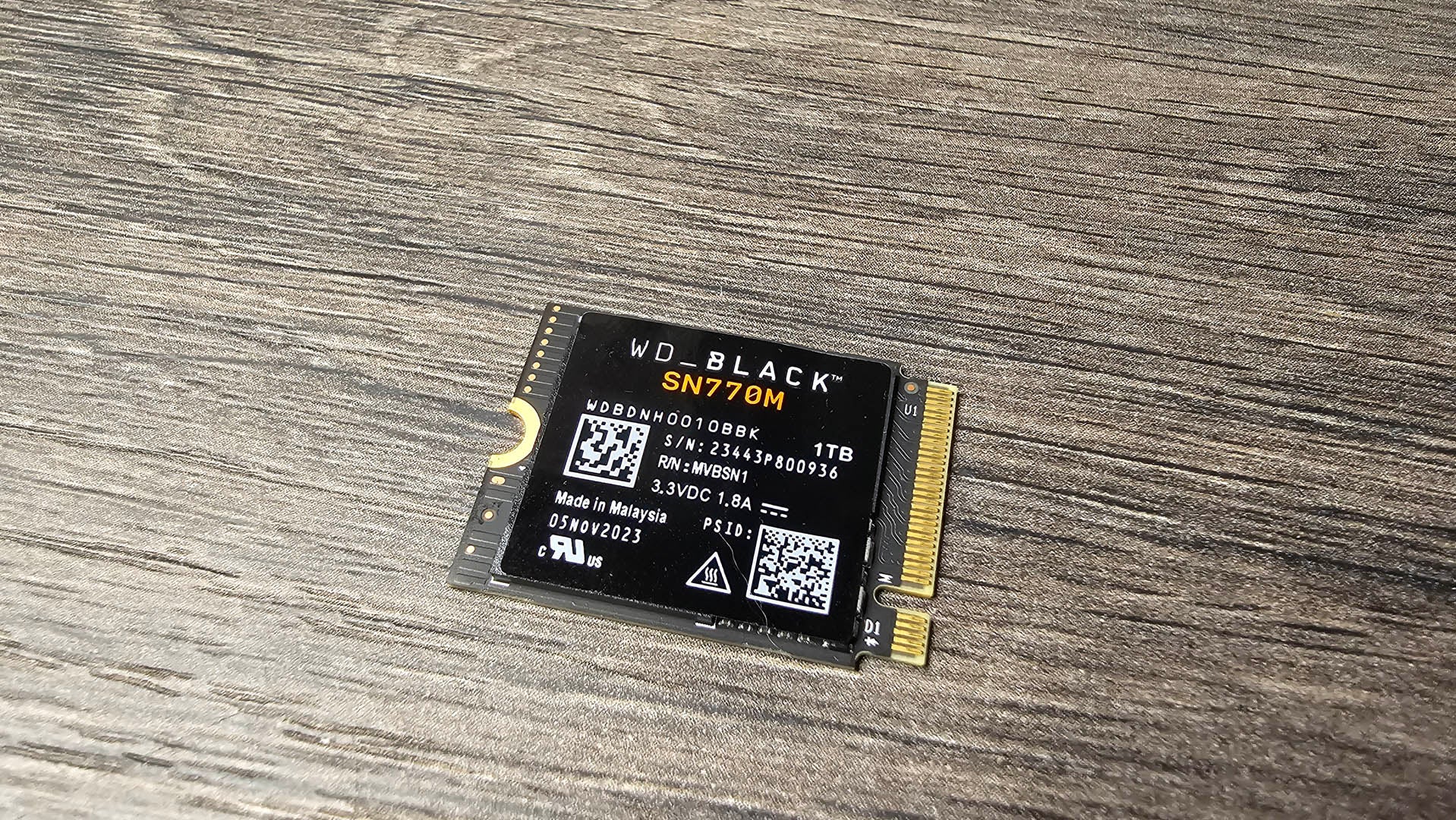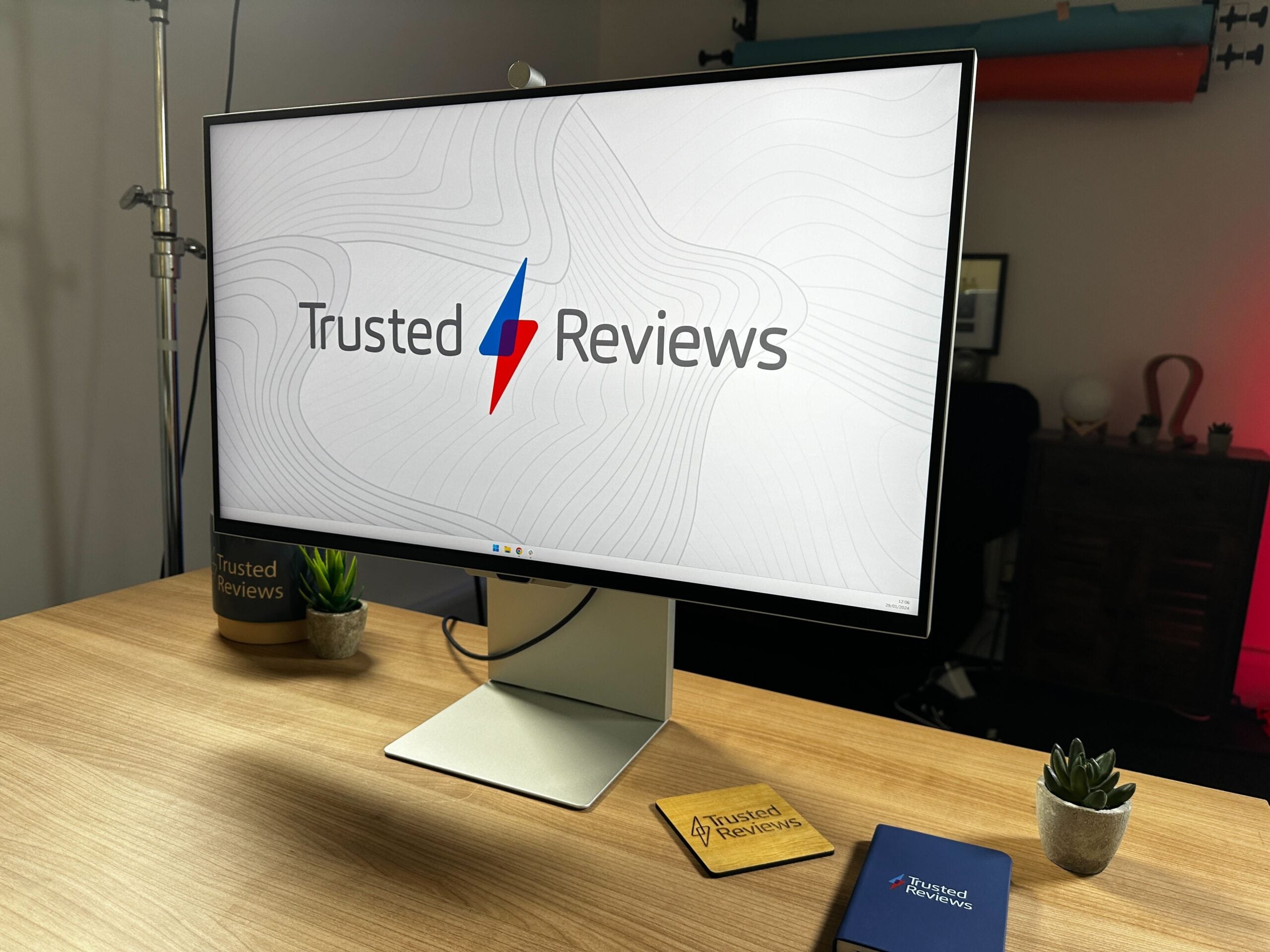Acer Swift Go 14 Review
A solid laptop that favours function over form


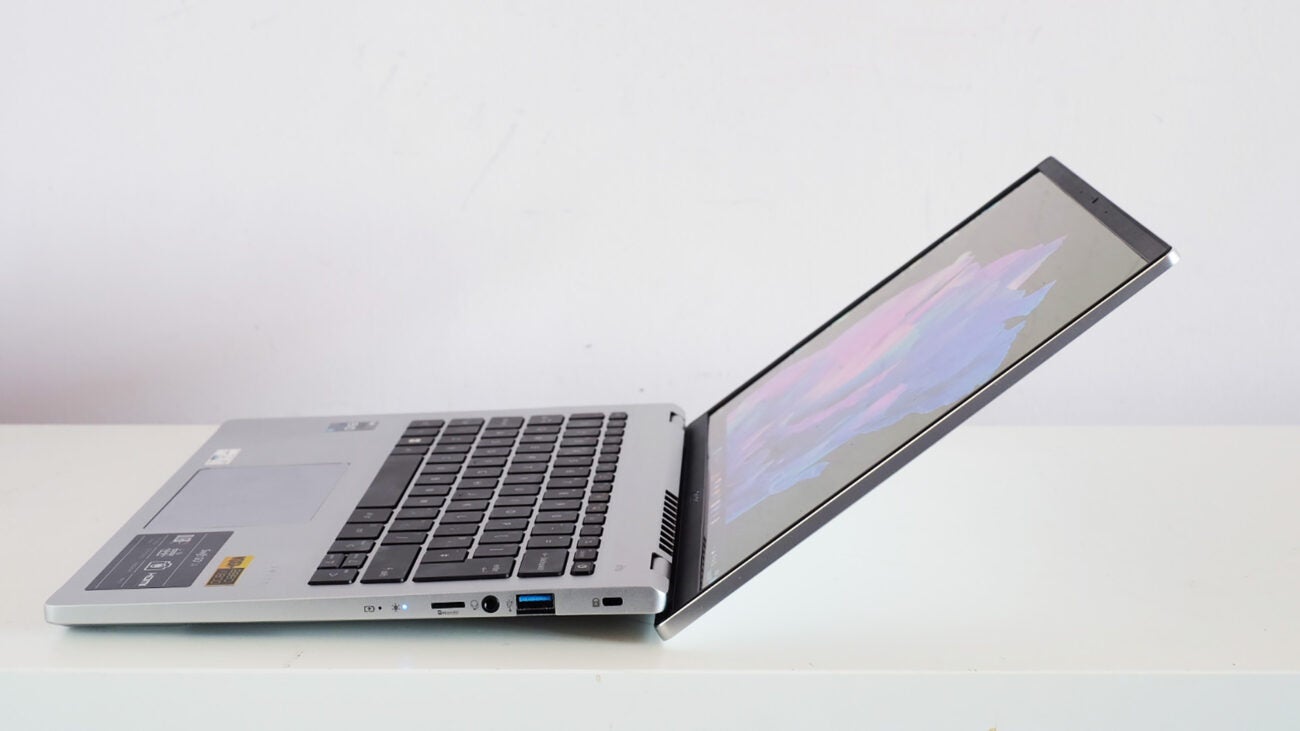





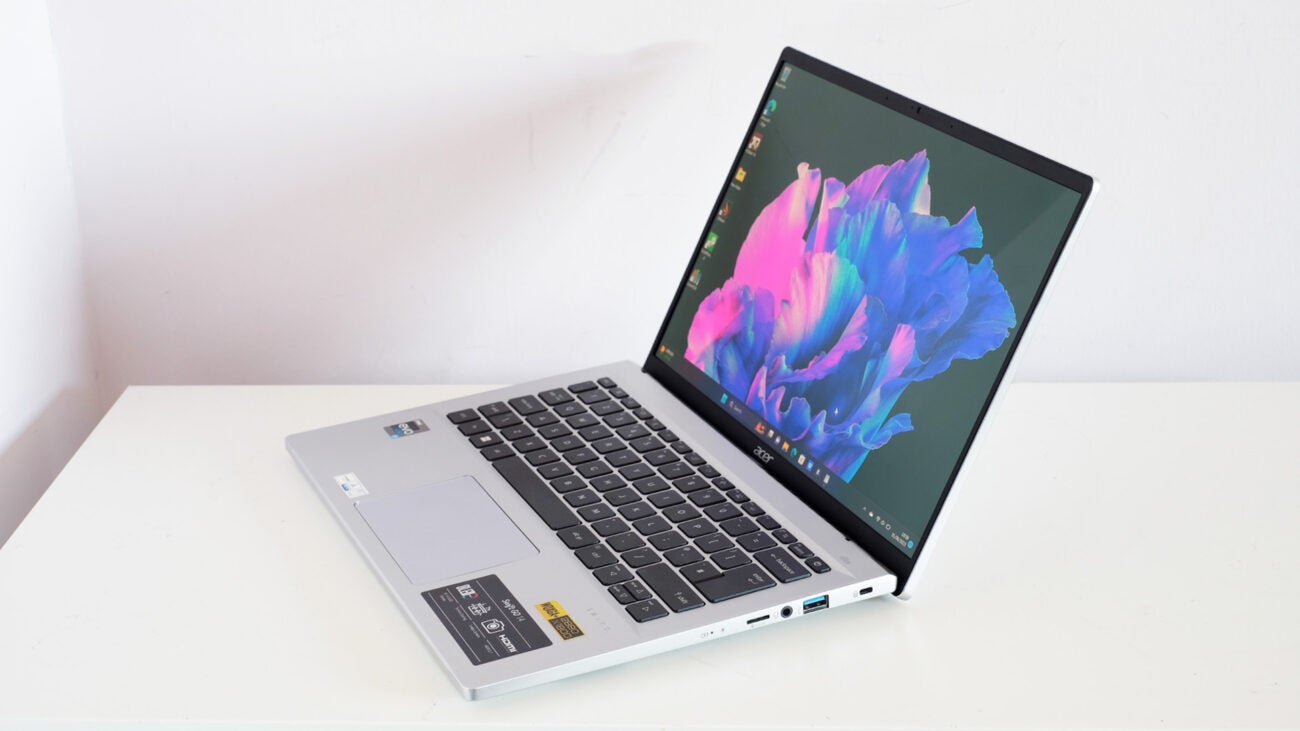

Verdict
The Acer Swift Go 14 combines power and portability, without sacrificing all-day battery life. However, the design and feel of the keyboard and trackpad are firmly rooted in the series’s mid-range beginnings.
Pros
- Powerful processors
- Solid battery life considering performance
- Super-saturated OLED screen option
Cons
- Basic keyboard and trackpad
- Unimpressive design
Availability
- USARRP: $1049.99
Key Features
- 1800p OLED screenHigh-end versions of this laptop have a super-colourful, high-resolution OLED screen with upwards of 500-nit brightness. Powerful stuff.
- 1440p webcamThis may be the era of Full HD webcams becoming the standard, but Acer goes further here with a 1440p one.
- OceanGlass touchpadAcer uses an OceanGlass touchpad, made of recycled materials. But it’s recycled plastic, not glass, so make sure you’re OK with that.
Introduction
If you want a highly portable laptop and have at least a little money to spend, the Swift family should be your first stop in the Acer line-up. The new-for-2023 Swift Go 14 series is effectively a more performance-focused rebirth of the Swift 3.
That is no bad thing. The Swift 3 has been an easy recommendation for folks after a laptop that can do all your ordinary productivity jobs and a bit more, in style, and does not cost too much.
I’m using the top-end Swift Go 14 model, which raises the bar on performance and provides an excellent OLED screen for at least a couple of hundred pounds less than the Asus ZenBook Pro OLED I used recently, at $1099. However, the touchpad could be better and this is more “practical PC” than style icon, which might matter to some.
This series starts at $899, but bear in mind performance and display quality will be quite different in such a laptop. Still, It is actually in those lower tiers where I think this series may thrive.
Design and keyboard
- Higher on practicality and portability than style
- Metal casing
- OK keyboard, relatively poor touchpad
In some of Acer’s laptop series, like the exceptionally light Swift 5, Acer aims for superlatives. This is not the Acer Swift Go 14’s game.
It’s light enough, slim enough, luxurious enough, without pushing so hard in any direction you end up with a) a ridiculously expensive laptop or b) one that feels flimsy.
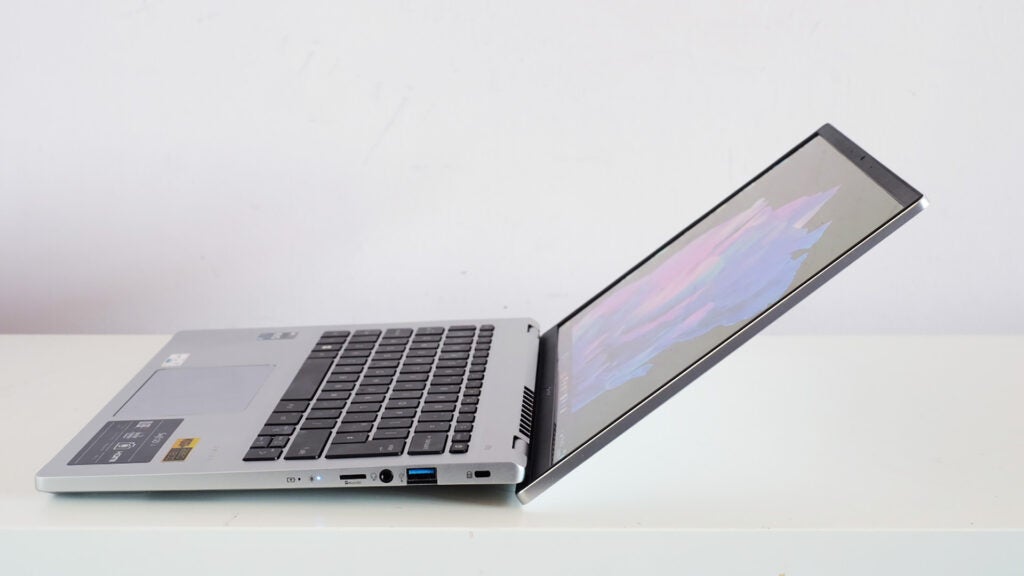
The Swift Go 14’s casing is aluminium, it’s 14.95mm thick and weighs 1.25kg. These are fairly standard figures for a slim and light PC. But aside from the brief uncanny feeling they’ve left the innards out of those sub-1kg laptops, PCs specified like this one are still ideal for portable use.
There are no worryingly bendy bits in the keyboard plate – it’s stiff all the way across. And while the Swift Go 14 hinge isn’t one of those “ergo-lift” style designs where you can gracefully open it up with a single finger, it is sturdy. The hinge also lifts the keyboard up slightly at the rear when opened up.
You may be getting the idea. The Swift Go 14 doesn’t have the flashy style of some more expensive ultra-light competitors like the Dell XPS 13 Plus. But the fundamentals are sound.
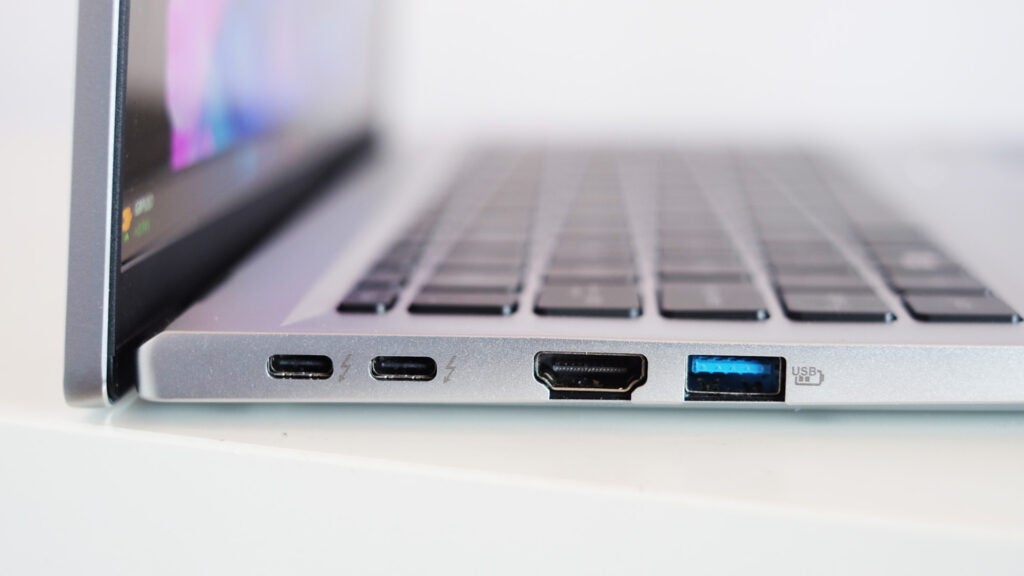
The input elements are a bit more mixed. The port selection is decent, with 2 x Thunderbolt 4, an HDMI, 2 x USB-A, a headphone ack, and a MicroSD Card Reader
This laptop’s keyboard is decent but ultimately unremarkable. It has fractionally greater action than a MacBook Air, and a slightly meatier, less clicky feel.
However, it’s still a bog-standard chiclet design that doesn’t have the purposeful sense of the key actuation of the best. The 2-stage backlight is also a little weak and is more visible through the keys’ borders than the lettering on the top of each cap. Considering the Swift Go 14 starts at $850, though, this kind of keyboard is more than acceptable.
I have more issues with the trackpad. It feels cheaper than I’d like because it is made of what Acer calls OceanGlass. That is the Acer marketing team’s name for recycled plastic.
While Acer’s interest in using recycled materials is admirable, glass pads feel much better than plastic ones. Plastic pads are tackier, and less smooth to glide across, and you can feel they don’t have the hardness of glass upon a press. It makes mechanical pads like this one feel as though they are moving as one rather than bending, an effect missing here.
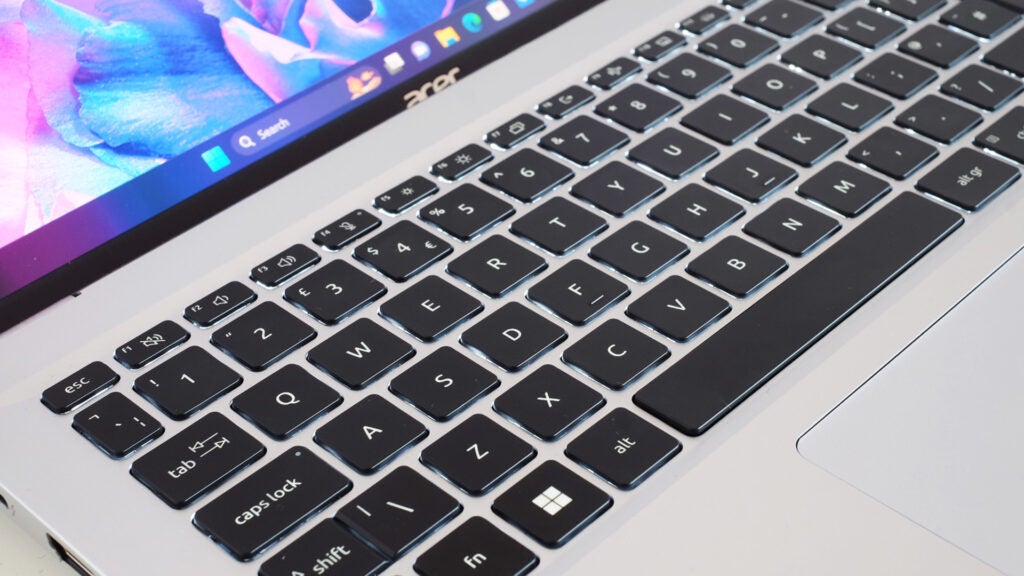
The clicker actuation itself is also cheap-feeling. On the positive side, I haven’t had issues with phantom taps or pad sticking. And this observation is brought into focus because I am using a version of the Swift 14 Go you have to pay serious money for, upwards of $1099. Were I looking at the $899 entry-level version, I’d be happier with the pad.
A compromised pad design, once again, makes much more sense in the lower specs of the series. Still, I’ve used much nicer pads in, for example, the Lenovo Yoga Slim 7.
Display and Sound
- Extremely high colour gamut coverage
- Plastic screen surface, non-touch
- Lower-end models use IPS LCD screens
The Acer Swift 14 Go has a high-resolution 14-inch OLED screen. It has 2880 x 1800 pixels to its name and is a practical 16:10 shape.
Acer’s plastic trend continues with the screen, though. The top layer is plastic, rather than glass. And a raised border of plastic sits around the screen itself.
This less slick style is sometimes used in super-light laptops that can’t afford the extra weight of a glass panel. Or in practicality-led PCs that have matt finish screens. The Swift Go 14 is neither of these, as the finish of the plastic is still pretty glossy.
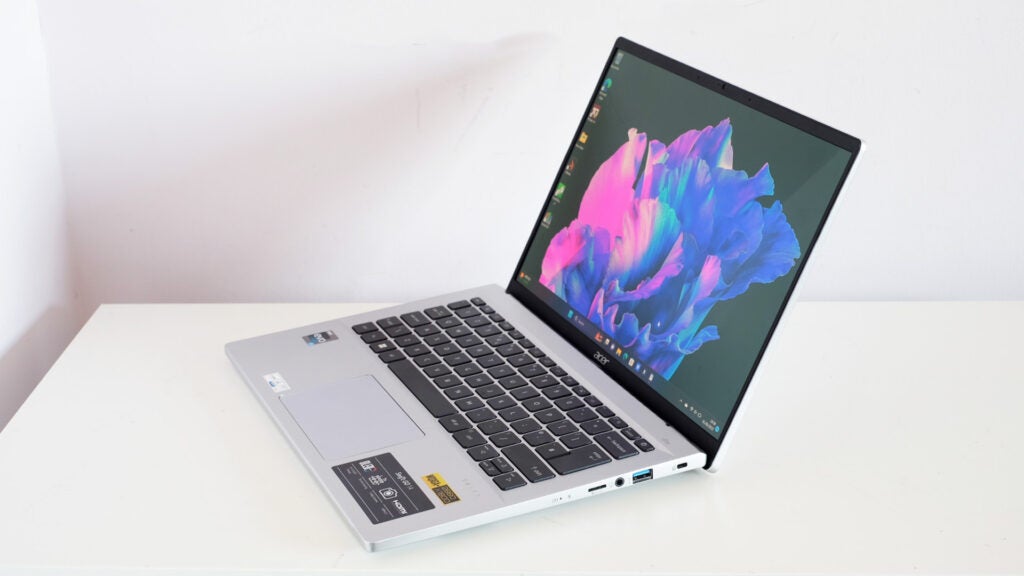
However, the first thing I noticed about the Swift Go 14 display was its punchy, vibrant colour. You expect this from an OLED but, according to my colourimeter, this is one of the more colour-rich laptops I’ve tested to date.
It pretty much fulfils the entire sRGB, Adobe RGB and DCI P3 colour gamuts, covering an excellent 99.1% of the challenging Adobe RGB (120.6% by volume) standard and 99.5% of DCI P3.
I would have liked Acer to include an easy way to tone down the colour pop using pre-baked profiles, though. That OLED colour saturation is great, but I’m not sure I want it to scream about its presence whenever an icon with a bit of red is on-screen. Asus has software called Splendid that does just this.
Acer instead relies on an Intel app called Intel Graphics Command Centre. This does let you fiddle with colour saturation but isn’t that friendly or foolproof. My colourimeter also suggests areas of this display’s accuracy are way off. While the Delta E average score of 2.51 is fine – below 3 is considered accurate enough for most eyeballs not to notice inaccuracies – the max of 15.11 shows some tones are much further off the mark.
This is also a 90Hz screen, not the usual 60Hz, for greater motion smoothness. And its peak brightness of 496 nits, or 519 when HDR is engaged, is just what Acer claims. It’s an all-round excellent screen, although you only get this top-tier OLED panel in the highest Swift Go 14 spec variants. There are lower-end LCD models and even ones with touch support. My review model is non-touch.
The OLED is great for watching movies and the like, but the speakers are not really up to it. They have no bass. The projection and volume of the mids and upper frequencies are fine, but the lack of any lower-end substance leaves many types of content sounding hollow.
Performance
- Potent processor for the size and weight
- Somewhat noticeable higher-pitch fan noise
- Generous storage
At the beginning of this review, I suggested the Swift Go 14 was a bit like the Swift 3. However, it’s more powerful than any Swift 3 I’ve used to date, even factoring in the shift in processor generation.
My review Swift Go 14 has the high-tier Intel Core i7-13700H, a true performance processor, where I’d expect a laptop like this to use one of Intel’s mid-level “P” series ones at most. It’s a 14-core, 20-thread whopper. The more portable-friendly, and still powerful, Core i7-1360P has 12 cores and 16 threads.
It scores 6160 in PC Mark 10, 11724 in Geekbench 6. A laptop with the low-voltage, portability-driven Core i7-1355U might score around 8500 points in Geekbench 6 despite still having an “Intel Core i7”. It’s ready for the tougher stuff you could throw a laptop’s way.
Acer says the Swift Go 14 runs the CPU at 45W. It can hang around that power use for a little while but, using HeavyLoad to emulate sustained loads, the laptop actually drops to around 35W in short order. This heads down further two around the 25W mark when on battery.
You’re not getting to see the full potential of the Core i7-13700H in this laptop. However, there is an appreciable performance uplift over a P-series alternative and a huge gap between this and a truly low-voltage Core i7-1355U laptop with base power consumption of 15W. You’ll appreciate this extra power if, for example, you plan on creating videos.
Power limits placed on the Acer Swift Go 14 are all about heat management, and despite having “TwinAir” cooling, the Swift 14 Go just isn’t able to shift as much air as a workstation design. The noise of its fans is also fairly high-pitch, which I always find more distracting than a lower-tone hum. However, Acer does seem to have managed this laptop’s fan speeds pretty well, although I do find downloads can make them spin up even if you’re doing only basic jobs besides.
This laptop has no particular gaming abilities because it only has Intel’s integrated Xe graphics. If playing games is a priority, buy a system with a dedicated graphics card.
Battery life
- 100W USB-C charger
- Claimed 11-hour battery life
- 65Wh battery capacity
When a laptop has a high-performance CPU, it’s natural to expect its battery life to be poor. The Acer Swift Go 14’s is actually rather good, all considered.
It lasts nine hours 42 minutes in PC Mark’s Modern Office benchmark at 150-nit brightness.
After doing some further testing with Geekbench 6, it looks like this Intel generation is capable of some AMD-style stunts, pulling down the system performance in order to radically improve battery life. Performance, when plugged in, is about 1.5x as good as it is on battery (on Windows 11’s balanced performance profile).
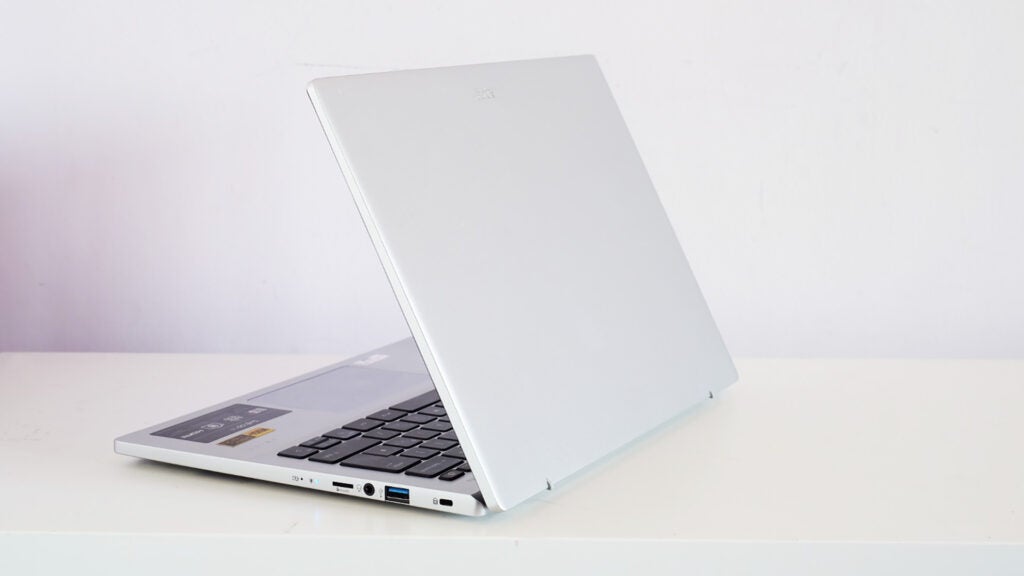
The higher performance of this laptop also demands a punchier-than-average adapter. It’s a 100W one, where 65W is the higher-end portable standard. Faster charging, yes. But it’s also a bit heavier and larger. The Swift 14 Go will also charge using a lower-power USB adapter, mind, but will fire up a message that it’s not charging at full speed.
The charging socket is a Thunderbolt 4, and there’s a second Thunderbolt port right next to it. We also get an HDMI 2.1 socket, two USB-As and a microSD slot.
Acer uses a 1440p webcam in this laptop, one significantly better than the 2023 1080p norm. However, you don’t really get to appreciate it in the average webcam app.
This is an unusually wide-angle camera, and Acer has injected a system-wide feature to make it centre on your face even when you’re not directly facing the screen. There’s also background blur, applied before the feed even touches your chat app. It’s not a must-have, and you lose that 1440p sharpness when using a standard webcam meeting view, but it’s a neat concept.
Latest deals
Should you buy it?
A strong OLED, performance and battery life combo
Need serious performance with almost no bulk and good battery life when not plugged in? This laptop is a good bet. The colour depth of the higher-end OLED models is also seriously impressive.
High-quality design
Acer doesn’t pay as much attention to the finer details of the outer elements here. The touchpad is mediocre, the keyboard backlight doesn’t look great and the raised plastic screen bezel means the design doesn’t have too much classic ultraportable flair.
Final Thoughts
The Acer Swift Go 14 is a practical, portable, high-performance laptop. You could easily pay a good £200/$200 more and end up with lesser performance and a less colour-rich screen.
It’s not quite as much of a star when you look more at how the Swift Go 14 feels to use than how it performs. The touchpad feels cheap, the keyboard backlight looks a bit basic and the speakers lack any real bass, undermining the entertainment potential of the ultra-bold OLED screen.
All these factors mean the $1000-plus model I reviewed can’t compete with a machine like the Asus Zenbook 15 OLED, that only costs a bit more but offers quality across the board. The same applies up against the excellent MacBook Air M2 as well.
As such, I feel I’d be more inclined to recommend the lower-spec Swift Go 14 variants at around $850. However, this family is diverse enough not to be able to let me recommend those outright based on my experiences with this super-powered model.
How we test
Every laptop we review goes through a series of uniform checks designed to gauge key things including build quality, performance, screen quality and battery life.
These include formal synthetic benchmarks and scripted tests, plus a series of real-world checks, such as how well it runs popular apps.
We used as our main laptop for at least a week.
Tested the performance via both benchmark tests and real-world use.
We tested the screen with a colorimeter and real-world use.
We tested the battery with a benchmark test and real-world use.
FAQs
There is currently no mobile internet-enabled version of this model. It’s Wi-Fi only.
The cheapest version is a mid-tier laptop, and the priciest models have true high-end components.
Acer quotes 11 hours, we found it typically lasts just under 10 hours. Not bad at all.


